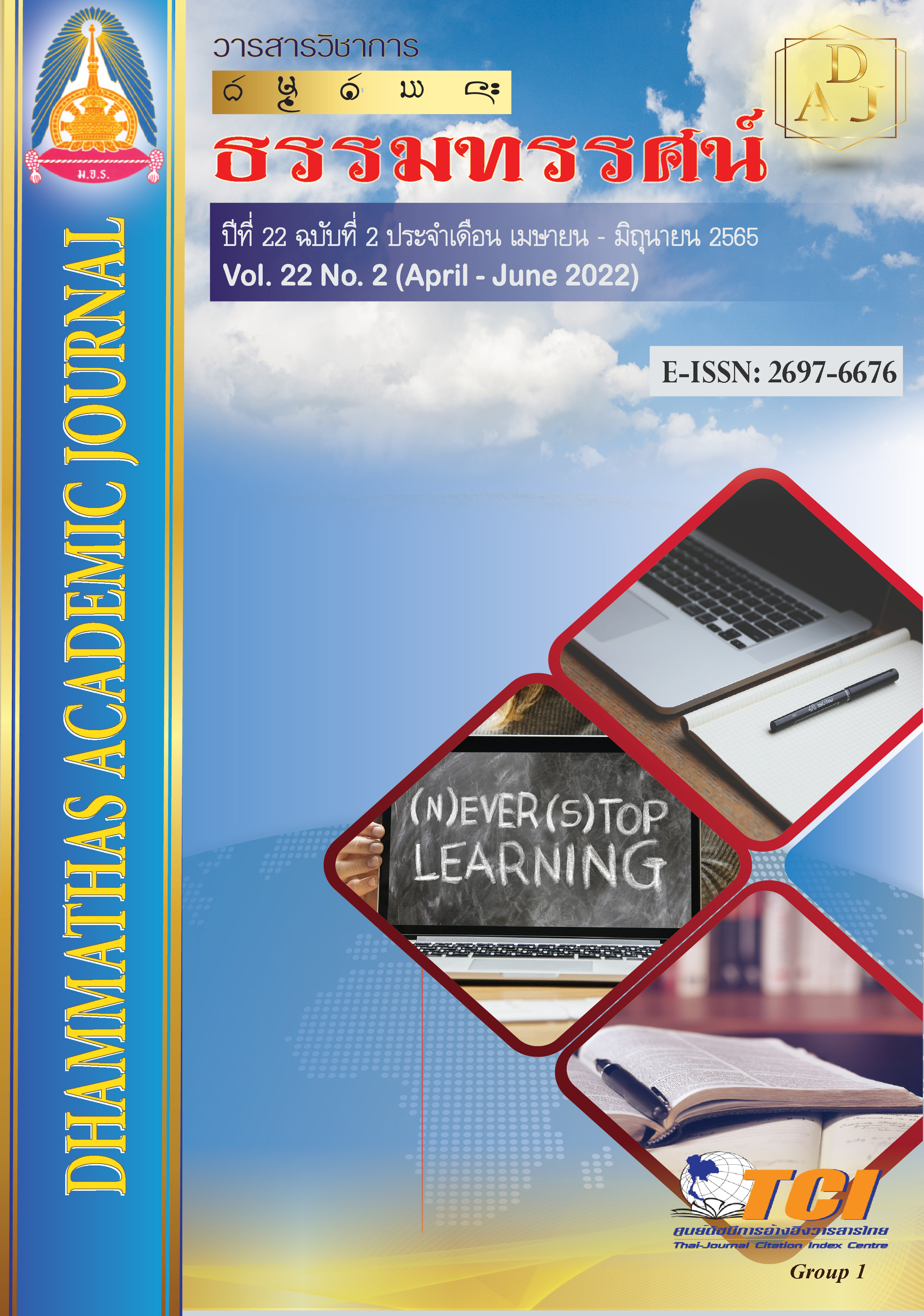A Casual Model of Teacher’s Burnout
Main Article Content
Abstract
The purpose of this research was to develop and investigate the validity of causal relationship model of teacher’s burnout with empirical study. For the qualitative method, the samples of this study were 556 teachers in the secondary schools under the secondaryeducational service area office 1 And 2. In this study, questionnaires were used to collect data about five variables as follows: work aholic, job stress, positive thinking, job burnout, and job satisfaction. Structural equation modeling (SEM) was used to analyze data.
Results indicated that: the structural model was consistent with empirical data as demonstrated by the following indices: 40.60 % of the variance in associated with job burnout was explained by three predictors. Specifically, job stress had the strongest direct effect on job burnout. This finding added to the debate regarding job burnout as a mediator between job stress and job satisfaction.
Article Details

This work is licensed under a Creative Commons Attribution-NonCommercial-NoDerivatives 4.0 International License.
เพื่อให้เป็นไปตามกฎหมายลิขสิทธิ์ ผู้นิพนธ์ทุกท่านต้องลงลายมือชื่อในแบบฟอร์มใบมอบลิขสิทธิ์บทความ ให้แก่วารสารฯ พร้อมกับบทความต้นฉบับที่ได้แก้ไขครั้งสุดท้าย นอกจากนี้ ผู้นิพนธ์ทุกท่านต้องยืนยันว่าบทความ ต้นฉบับที่ส่งมาตีพิมพ์นั้น ได้ส่งมาตีพิมพ์เฉพาะในวารสาร วิชาการธรรม ทรรศน์ เพียงแห่งเดียวเท่านั้น หากมีการใช้ ภาพหรือตารางของผู้นิพนธ์อื่นที่ปรากฏในสิ่งตีพิมพ์อื่นมาแล้ว ผู้นิพนธ์ต้องขออนุญาตเจ้าของลิขสิทธิ์ก่อน พร้อมทั้ง แสดงหนังสือที่ได้รับการยินยอมต่อบรรณาธิการ ก่อนที่บทความจะได้รับการตีพิมพ์References
กิตติพงษ์ เชี่ยวรุ่งโรจน์. (2548). ความชุก และปัจจัยที่เกี่ยวข้องกับความเครียดจากการทำงานและภาวะเบื่องานในพนักงานต้อนรับบนเครื่องบิน บริษัทการบินไทยจำกัด (มหาชน). (วิทยานิพนธ์วิทยาศาสตรมหาบัณฑิต). กรุงเทพฯ: จุฬาลงกรณ์มหาวิทยาลัย.
ชูศรี วงศ์รัตนะ. (2553). เทคนิคการใช้สถิติเพื่อการวิจัย. (พิมพ์ครั้งที่ 12). กรุงเทพฯ: คณะศึกษาศาสตร์ มหาวิทยาลัยศรีนครินทรวิโรฒ.
นิภา แก้วศรีงาม. (2547). ความคิดเชิงบวก (Positive Thinking) พึงคิดว่าทุกปัญหามีทางออก ไม่ใช่ทุกทางออกเป็นปัญหา. วารสารวงการครู, 12(1), 76-78.
บุญใจ ศรีสถิตนรากูร. (2555). การพัฒนาและตรวจสอบคุณภาพเครื่องมือวิจัย: คุณสมบัติการวัดเชิงจิตวิทยา = Development and validation of research instruments: psychometric properties. กรุงเทพฯ: จุฬาลงกรณ์มหาวิทยาลัย.
ภูเมธ แก้วเขียว. (2544). การศึกษาระดับความเครียดและประสิทธิภาพการทำงานของครูการศึกษาพิเศษในเขตกรุงเทพมหานคร. วารสารวิจัย มสด. สาขามนุษยศาสตร์และสังคมศาสตร์, 10(1), 60-76.
สมยศ นาวีการ. (2544). การพัฒนาองค์กรและการจูงใจ. (พิมพ์ครั้งที่ 2). กรุงเทพฯ: ดวงกมล.
สำนักงานกองทุนสนับสนุนการสร้างเสริมสุขภาพ. (2565). สสส. – สธ. ชู โปรแกรมอบรม “สร้างสุขด้วยสติในองค์กร MIO” รูปแบบ e-Learning ภายใต้นวัตกรรมแนวคิด Happy Workplace. เข้าถึงได้จาก https://www.dmh.go.th/news-dmh/view.asp?id=31841&msclkid=b28479acd09b11ec96b77a3450aa8081
Bermejo, L., Hernández-Franco, V., & Prieto-Ursúa, M. (2013). Teacher Well-being: personal and job resources and demands. Procedia-Social and Behavioral Sciences, 84, 1321-1325.
Farager, E. B. Cass, M., & Cooper, C. L. (2005). The relationship between job satisfaction and health: A meta-analysis. Journal of Occupational and Environmental Medicine, 62(2), 105-112.
Hair, J. F., Jr., Black, W. C., Babin, B. J., & Anderson, R. E. (2010). Multivariate data analysis: A global perspective. (7th ed.). Upper Saddle River, NJ: Pearson Education.
Maslach, C., & Leiter, M. P. (1997). The truth about burnout. San Francisco: Jossey-Bass.
_______. (2008). Early predictors of job burnout and engagement. Journal of Applied Psychology, 93(3), 498-512.
Otero-Lopez, J. M. et al., (2010). Exploring Stress, Burnout, and Job Dissatisfaction in Secondary School Teachers. International Journal of Psychology and Psychological Therapy, 10(1), 107-123.
Piko, BF. (2006). Burnout, role conflict, job satisfaction, and psychosocial health among Hungarian health care staff: A questionnaire survey. InternationalJournal of Nursing Studies, 43(3), 311-318.

